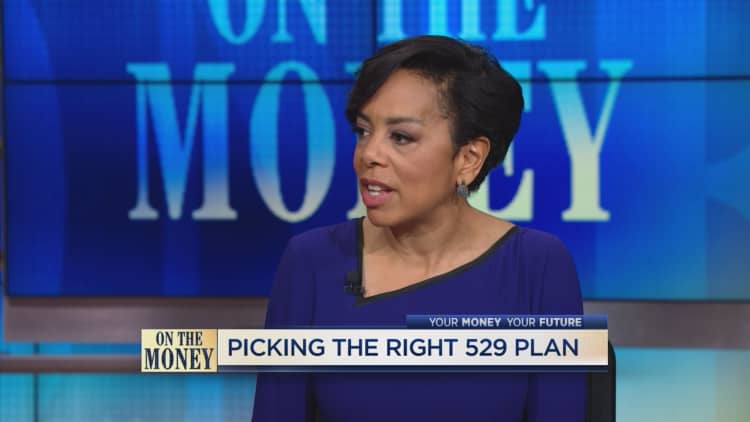The best-laid plans of college savers can go awry.
No big deal. There are options, should the original reason you started saving in a 529 plan disappear.
Experts agree that 529 plans, tax-advantaged investment funds that can be used for education costs, are one of the best ways for you to financially prepare for your child's college years. If you start saving at your son or daughter's birth, about a third of the savings goal will come from earnings alone, said Mark Kantrowitz, publisher of SavingForCollege.com.
Kim Lankford, contributing editor at Kiplinger's Personal Finance and an expert on the plans, said she often hears from people who have run into a situation in which they need to find a Plan B for their 529 account.
Perhaps the child for whom they were saving decides to forgo college or develops an illness or disability along the way that makes attending impossible.
Others will find themselves needing to repurpose a 529 plan because their child won a full-ride scholarship to their college or was accepted into a military service academy, where the cost of tuition is covered.
"It's a nice problem to have," Lankford said. "But they wonder what their options are."

The simplest pivot is to change the account's beneficiary. You can transfer the account to a relative without facing any tax consequences. (That includes adopted and foster children, by the way.)
Since these accounts are free from rules around when you must use them by, some parents will even hold onto their plan for their grandchildren.
More likely, however, a parent will transfer the account to another child who still plans to have to pay for college. Even if that person already has their own account, benefits abound, said Kantrowitz. (There is no limit to how many 529 plans a person can be the beneficiary of. However, remember that in some cases, these accounts can affect your child's eligibility for financial aid.)
"It may reduce their debt," he said. "Or it will let them go to a more expensive college than they would have otherwise." And there are no tax consequences for doing so, he added.
Don't want multiple plans? Every 12 months, you can also roll over one 529 plan into the other. However, if you're blending plans from different states, make sure you're not losing any tax advantages. Check the rules of your state and plan.
Because these funds are typically age-weighted, becoming less aggressive as the first day of college approaches, you'll want to make sure the investment strategy of the plan matches the new person, said Lankford.
For instance, if you switch the account from a 16-year-old child to a 9-year-old child, "you may not need to get as conservative as quickly," she said.
You can find rollover and beneficiary change forms on your 529 plan website. Typically they need to be downloaded and then mailed or faxed in, said Kantrowitz.
The new tax code also offers some additional backup options for 529 plans, Lankford said.
For one, parents can now use the accounts for K-12 private school expenses of up to $10,000 a year. "If it looks like they're not going to be using it for college, and they're in private school, you can still use it for that," she said.
Should your child not be attending college because of a disability, the new code also permits people, without any penalty, to rollover up to $15,000 a year from a 529 plan to an ABLE account, a tax-advantaged savings account for disabled individuals.
If you simply need to take out the money for a noneducational purpose, you'll typically have to pay income taxes along with a 10 percent tax penalty on the account's earnings.
In some specific cases, you can take a nonqualifying distribution from your 529 plan without paying the 10 percent tax penalty. You still have to pay the income tax on the earnings portion of your withdrawal, although that can often be calculated based on the beneficiary's rate, which is often lower than the savers'. (SavingForCollege.com has a list of those exempted reasons, such as the death of the beneficiary.)
But even if your reason for taking out the money results in you being dinged with a penalty, it's not all that severe, Kantrowitz said.
"If you're going to pay a 10 percent penalty on the earnings, it's going to be anywhere from 1 percent to 3 percent of the total amount," Kantrowitz said. "That's negligible."
More from Personal Finance:
Attending Harvard will cost $475,000 in 2036. Here's how much other schools will charge
This account can help you slash your tuition bill — and few Americans know it
Tapping 529s to pay for private school could come back to bite you


